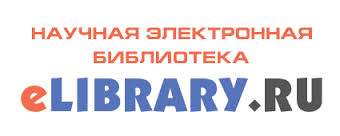FANTASY LITERATURE IN IRAN (“GENIE IN A CANˮ BY MEHDI RAJABI)
Abstract
https://doi.org/10.18522/1995-0640-2025-1-138-147
This article provides a brief overview of fantasy literature in Iran, focusing on the teenage novel “Genie in a can” by contemporary Iranian fantasy writer Mehdi Rajabi. The author, who works primarily in the genre of fantasy for children and teenagers, believes it is necessary to move from writing tragedies to discussing the current problems of the modern youth generation through the prism of fantasy. Despite the fact that fantasy literature in Iran has began to develop relatively recently, it has already taken a significant place in Persian literature, allowing us to rethink the world and its representation. Mehdi Rajabi depicts a reality in which today's teenagers create their own worlds, shaping their lives in the process. In the novel, he traces the trajectory of a teenager's life and the problems and concerns he has to face. Using elements of fantasy literature, the author shows how young people sometimes cope with difficulties without the support of adults. Rajabi considers the modern teenager as a symbol of the future of humanity, its progress and its place in society and family. In “Genie in a can”, the writer harmoniously combines the real and imaginary worlds, focusing on the main character, who becomes the central figure of the novel. The article also analyzes the elements of fantasy literature from the perspective of a contemporary Iranian fantasy writer, emphasizing their significance in the context of adolescent literature.
Key words: fantasy literature, fantasy, imagination, today’s teenagers, Persian literature, Mehdi Rajabi
Downloads
Published
How to Cite
Issue
Section
License
Copyright (c) 2025 Janolah Karimi-Motahhar, Seyedeh-Faezeh Hosseini Darberazi, Marzieh Yahyapour

This work is licensed under a Creative Commons Attribution-NonCommercial 4.0 International License.
Authors who publish with this journal agree to the following terms:
- Authors retain copyright and grant the journal right of first publication with the work simultaneously licensed under a Creative Commons Attribution License that allows others to share the work with an acknowledgement of the work's authorship and initial publication in this journal.
- Authors are able to enter into separate, additional contractual arrangements for the non-exclusive distribution of the journal's published version of the work (e.g., post it to an institutional repository or publish it in a book), with an acknowledgement of its initial publication in this journal.
- Authors are permitted and encouraged to post their work online (e.g., in institutional repositories or on their website) prior to and during the submission process, as it can lead to productive exchanges, as well as earlier and greater citation of published work (See The Effect of Open Access).


















